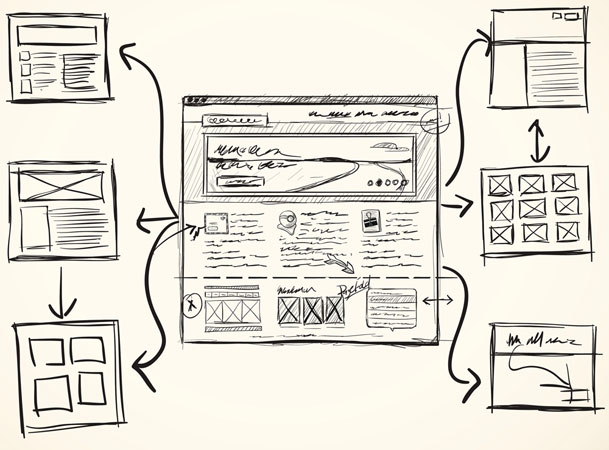Once you’ve selected a talented web design team to help create your new website, one of the first things you and your creative team will do together is develop a working site map. This is simply a list or flowchart of all the pages that have to be created, and how they’ll be linked to one another.
This seems like an incredibly simple part of the process, and it can be. However, it’s very important to get things right. Otherwise, you could end up with a site that’s hard to use, and has bad content flow. When that happens, visitors arrive at your pages but can’t find what they’re looking for and leave before turning into leads or customers.

Obviously, that’s not the kind of result you’re looking for when you put your website live. So, to help you avoid those kinds of blunders, let’s look at five things you should remember when planning your web design site map…
#1 Decide on Key Topics
A good creative team is going to spend a significant portion of time on the discovery process so they understand your business, your customers, and function of your site. So, you shouldn’t have any problems forgetting about major topics or product groupings.
Still, it’s not a bad idea to make a few notes ahead of time. It’s easier than you might think to get so wrapped up in the web design process that you overlook something obvious until it’s almost time to put your pages online.
#2 Figure an Optimum Visitor Flow
Although you can’t control how visitors arrive on your website, and what they’ll click on, you should have an idea of what sort of actions you want them to take. You should also have ideas about what order they might do them in.
By thinking things through in this way, you can not only streamline your menus and links, but increase the odds that visitors will convert into leads or buyers.
#3 Break Big Ideas into Smaller Pages
Whenever possible, avoid having webpages that are extraordinarily long and dense. For one thing, they look intimidating to readers who might be scanning for quick pieces of information. And for another, it’s easy for important details to get lost when customers have to scroll through several different items.
A better solution is to break topics into manageable pages and then link to related topics so the perfect resource is always easy to find. That makes your site easier to organize and update, and a lot more usable for users.
#4 Don’t go Deeper Than Necessary
Even though you should break up big topics into different pages or sections, you don’t want to structure your site map in a way that important pieces of information are buried several layers deep within menus and submenus.
Although some kind of tree structure is often unavoidable, you don’t want visitors to get lost or overwhelmed. Having lots of content is a good thing, but only if it’s easy to actually utilize when you want answers.
#5 Make it Easy for Visitors to Get Help
This isn’t so much about your web design site map, but it is an enduring and important rule. No matter where someone is on any one of your pages, they should be able to return home, go backwards, or search for a specific term without having to think too much about it.
The easier it is for potential customers to get the help they need, the more likely they are to stick around and use your site. That translates into more sales for your time.
Need a New Website for your Business?
Like most things in life, putting together a web design site map gets a lot easier with practice. When you’ve been through the process dozens of times, you know what to ask, what to look for, and which mistakes not to make.
So, if you want to avoid common blunders and work with the best in the business, why not reach out to the creative team at Weblinx today? We’ll be happy to give you a quote for your project, and answers to your most pressing web design and digital marketing questions.